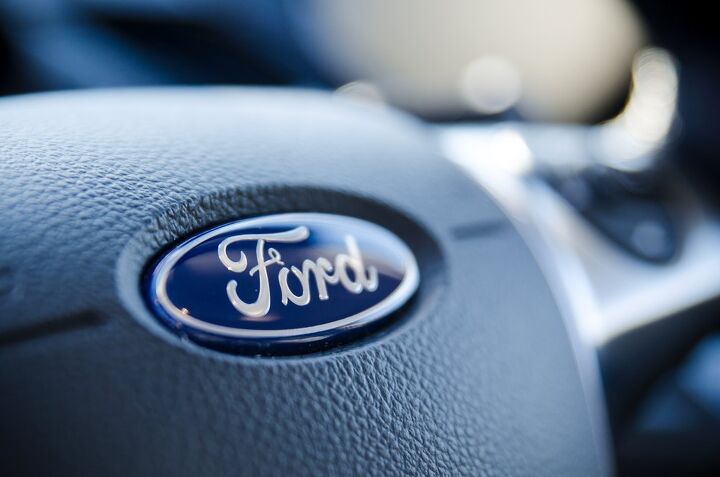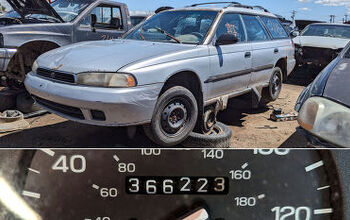Driving Dystopia: Ford Patent Would Have Vehicles Repossess Themselves

The number of U.S. vehicle owners who are more than 59 days behind in their auto loan payments was 26.7 percent higher at the end of 2022 than they were at the end of 2021. This is due to a myriad of factors. Car payments have gotten larger, loan terms have increased, inflation has devalued the currency, and subprime borrowers are finding themselves on the wrong end of a widening wealth gap.
While automotive repossessions declined during the pandemic, mainly due to lenders offering amnesty periods, they’ve likewise spiked through the end of 2022. This trend is assumed to continue, setting up a lot of business for repo men. However, Ford Motor Co. has patented a system that would effectively make vehicles unresponsive to drivers that have missed a few payments. Meanwhile, automobiles boasting the latest advanced driving technologies could allegedly repossess themselves.
It doesn’t appear that Ford actually has a working prototype, just a general premise of how things would operate. But this is the kind of thing people started fretting over the second the automotive industry started harping on vehicle connectivity and redefining what constitutes “ownership.” Conspiracy theories about automakers harvesting customer data or the police remotely disabling automobiles were initially dismissed as ludicrous. However, the former issue is now a verifiable fact with the latter premise gradually gaining credibility. Ford’s patent even highlights how connected vehicles would be simultaneously networked to lending institutions, repossession agencies, and the police.
The patent document was submitted to the United States Patent and Trademark Office (USPTO) in August 2021. But Ford’s “Systems and Methods to Repossess a Vehicle” wasn’t formally published until February 23rd of this year. We know of it because Steph Willems (TTAC legend) shared a report from The Drive referencing the patent filing.
From The Drive:
It explicitly says the system, which could be installed on any future vehicle in the automaker's lineup with a data connection would be capable of "[disabling] a functionality of one or more components of the vehicle." Everything from the engine to the air conditioning. For vehicles with autonomous or semi-autonomous driving capability, the system could "move the vehicle from a first spot to a second spot that is more convenient for a tow truck to tow the vehicle... move the vehicle from the premises of the owner to a location such as, for example, the premises of the repossession agency," or, if the lending institution considers the "financial viability of executing a repossession procedure" to be unjustifiable, the vehicle could drive itself to the junkyard.
No other automakers have recently attempted to patent a similar system, and indeed the Ford patent doesn't reference any other legal document for the sake of clarifying its idea. All of this being said, patent documents, especially applications like this one, do not necessarily represent an automaker's intent to introduce the described feature, process, or technology to its vehicles. Ford might just be attempting to protect this idea for the sake of doing so. The document does go into a lot of detail as to how such a system might work, though.
The system is supposed to work on just about any automobile capable of over-the-air updates. Though the document does make mention of repossession computers that could be installed on any models connected to the internet. That unit seems like it would be relatively easy to defeat, as you could just remove the box from whatever it’s connected to. However, more modern vehicles aren’t supposed to need any external hardware since the preexisting computers can just be reconfigured over the internet.
Implementation is presumed to vary, with the report stating that drivers could be issued warnings as various features of the vehicle are disabled to encourage payment. But things get pretty dystopian from there. The first features to go would be “cruise control, automated window controls, automated seat controls, and some components of the infotainment system (radio, global positioning system (GPS), MP3 player, etc.)” and they would be followed by "the air conditioning system, remote key fob, and an automated door lock/unlock system” going on the fritz.
If those headaches are not sufficient in forcing the driver to pay off their debt, the document suggests that an "incessant and unpleasant sound" could be played whenever the owner is inside the vehicle.
The next step is a full-blown lockdown of the vehicle until payment is received or the lender decides to have it repossessed.
While the patent filing does suggest that the vehicle could still be used for emergency situations, determining what constitutes a valid emergency could be left up to the vehicle’s onboard camera system and whatever the lender decides to make exceptions for. Otherwise, you’ll be locked out of your car for nonpayment – as the document states that "the repossession system computer may disable the door lock mechanism, thereby placing the vehicle in a lockout condition and preventing a person from entering a cabin of the vehicle."
Something like this has real potential to save businesses money on repo men since the gradual removal of features and then subsequent lockouts are bound to encourage payment. But the invasiveness of the whole procedure, which suggests leveraging onboard cameras to effectively spy on drivers, is almost beyond belief – and we haven’t even gotten to the really wild stuff yet.
Ford’s patent has a segment where a car that’s about to be repossessed takes in its surroundings to determine whether or not it can be easily accessed by the repo team. In some cases, the vehicle would even drive itself to a nearby location to avoid confrontation with the owner. However, something like this would require the car to have some of the latest advanced driving aids and something akin to a summon feature.
From the USPTO document:
In some cases, the vehicle can be a semi-autonomous vehicle and the repossession system computer may cooperate with the vehicle computer in the semi-autonomous vehicle to autonomously move the vehicle from a first spot to a second spot that is more convenient for a tow truck to tow the vehicle. The first spot may, for example, be located inside the property line of the owner (a garage or a driveway, for example) and the second spot may be outside the property line (a public road, for example).
In some other cases, the vehicle can be an autonomous vehicle and the repossession system computer may cooperate with the vehicle computer to autonomously move the vehicle from the premises of the owner to a location such as, for example, the premises of the repossession agency, the premises of the lending institution, an impound pound, or any other pre-designated location.
There are even provisions to have older vehicles drive themselves directly to the junkyard if the applicable institutions crunch the numbers and decide it doesn’t make financial sense to put the car back on the market. That makes it seem like Ford is looking way into the future for the potential applications of this system. But there are certainly aspects of it that could be implemented today – with The Drive making direct mention of the brand’s current Blue Cruise hands-free driving system.
Keeping in mind that a lot of patent filings never go anywhere and literally just exist so a business can be on a solid legal footing for subsequent intellectual property disputes, it’s still kind of terrifying that this kind of stuff is even on an automaker’s mind. Here’s hoping this concept ends up being too costly to implement and that we all manage to educate ourselves on how to disconnect our vehicles from the internet.
The complete patent filing is available here.
[Images: Proxima Studio/Shutterstock; USPTO]
Become a TTAC insider. Get the latest news, features, TTAC takes, and everything else that gets to the truth about cars first by subscribing to our newsletter.

A staunch consumer advocate tracking industry trends and regulation. Before joining TTAC, Matt spent a decade working for marketing and research firms based in NYC. Clients included several of the world’s largest automakers, global tire brands, and aftermarket part suppliers. Dissatisfied with the corporate world and resentful of having to wear suits everyday, he pivoted to writing about cars. Since then, that man has become an ardent supporter of the right-to-repair movement, been interviewed on the auto industry by national radio broadcasts, driven more rental cars than anyone ever should, participated in amateur rallying events, and received the requisite minimum training as sanctioned by the SCCA. Handy with a wrench, Matt grew up surrounded by Detroit auto workers and managed to get a pizza delivery job before he was legally eligible. He later found himself driving box trucks through Manhattan, guaranteeing future sympathy for actual truckers. He continues to conduct research pertaining to the automotive sector as an independent contractor and has since moved back to his native Michigan, closer to where the cars are born. A contrarian, Matt claims to prefer understeer — stating that front and all-wheel drive vehicles cater best to his driving style.
More by Matt Posky
Latest Car Reviews
Read moreLatest Product Reviews
Read moreRecent Comments
- Lou_BC Well, I'd be impressed if this was in a ZR2. LOL
- Lou_BC This is my shocked face 😲 Hope formatting doesn't fook this up LOL
- Lou_BC Junior? Would that be a Beta Romeo?
- Lou_BC Gotta fix that formatting problem. What a pile of bullsh!t. Are longer posts costing TTAC money? FOOK
- Lou_BC 1.Honda: 6,334,825 vehicles potentially affected2.Ford: 6,152,6143.Kia America: 3,110,4474.Chrysler: 2,732,3985.General Motors: 2,021,0336.Nissan North America: 1,804,4437.Mercedes-Benz USA: 478,1738.Volkswagen Group of America: 453,7639.BMW of North America: 340,24910.Daimler Trucks North America: 261,959




































Comments
Join the conversation
I don't think there is anything Ford can do that will stop the people who still buy their cars and trucks from buying them.
I wonder how much of this technology already exists. I remember an OnStar television commercial which showed a police pursuit of a GMC Yukon. The police, from their cruiser, contacted OnStar about the (presumably stolen) truck, the OnStar attendant flashed the external lights to verify this was the right vehicle, and then slowed and stopped the Yukon--on the expressway--to allow the police to apprehend its occupants.